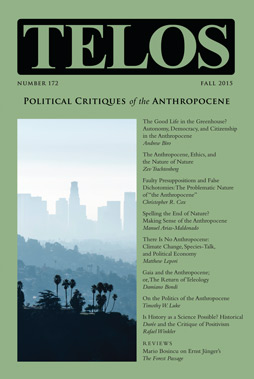 The Gaia hypothesis was formulated for the first time in 1979 by James Lovelock. According to this conception, the Earth should be seen as a macro-organism whose purpose is to keep constant some conditions that are necessary for the presence of life on its surface. However—often with the consent of Lovelock himself—this scientific hypothesis has gone beyond its limits, transforming itself in a sort of anti-humanistic pseudo-religion: the Earth becomes a kind of divinity (Gaia) with a purposive will. This process of “personification” is quite paradoxical: Nature acquires features that are denied, at the same time, to the single man. In fact the human being, in this conceptual framework, is only a part of the Great Whole, the Mother Nature; he cannot be “her” guardian at all, he has to abandon any pretense of ontological superiority and to “believe” in the infinite potential of Gaia, who always finds a way to restore the threatened balance. On the ontological level, there is no difference between the single man and the natural ambient that surrounds him; so, on the moral level, this metaphysical conception ends to justify the indifference of the person to the impact of his own actions on the ecosystem. Not surprisingly, Lovelock has recently been deployed in favor of nuclear power.
The Gaia hypothesis was formulated for the first time in 1979 by James Lovelock. According to this conception, the Earth should be seen as a macro-organism whose purpose is to keep constant some conditions that are necessary for the presence of life on its surface. However—often with the consent of Lovelock himself—this scientific hypothesis has gone beyond its limits, transforming itself in a sort of anti-humanistic pseudo-religion: the Earth becomes a kind of divinity (Gaia) with a purposive will. This process of “personification” is quite paradoxical: Nature acquires features that are denied, at the same time, to the single man. In fact the human being, in this conceptual framework, is only a part of the Great Whole, the Mother Nature; he cannot be “her” guardian at all, he has to abandon any pretense of ontological superiority and to “believe” in the infinite potential of Gaia, who always finds a way to restore the threatened balance. On the ontological level, there is no difference between the single man and the natural ambient that surrounds him; so, on the moral level, this metaphysical conception ends to justify the indifference of the person to the impact of his own actions on the ecosystem. Not surprisingly, Lovelock has recently been deployed in favor of nuclear power.
|
|
||||
|
Telos Press Publishing · PO Box 811 · Candor, NY 13743 · Phone: 212-228-6479 Privacy Policy · Data Protection Copyright © 2025 Telos Press Publishing · All Rights Reserved |
||||


